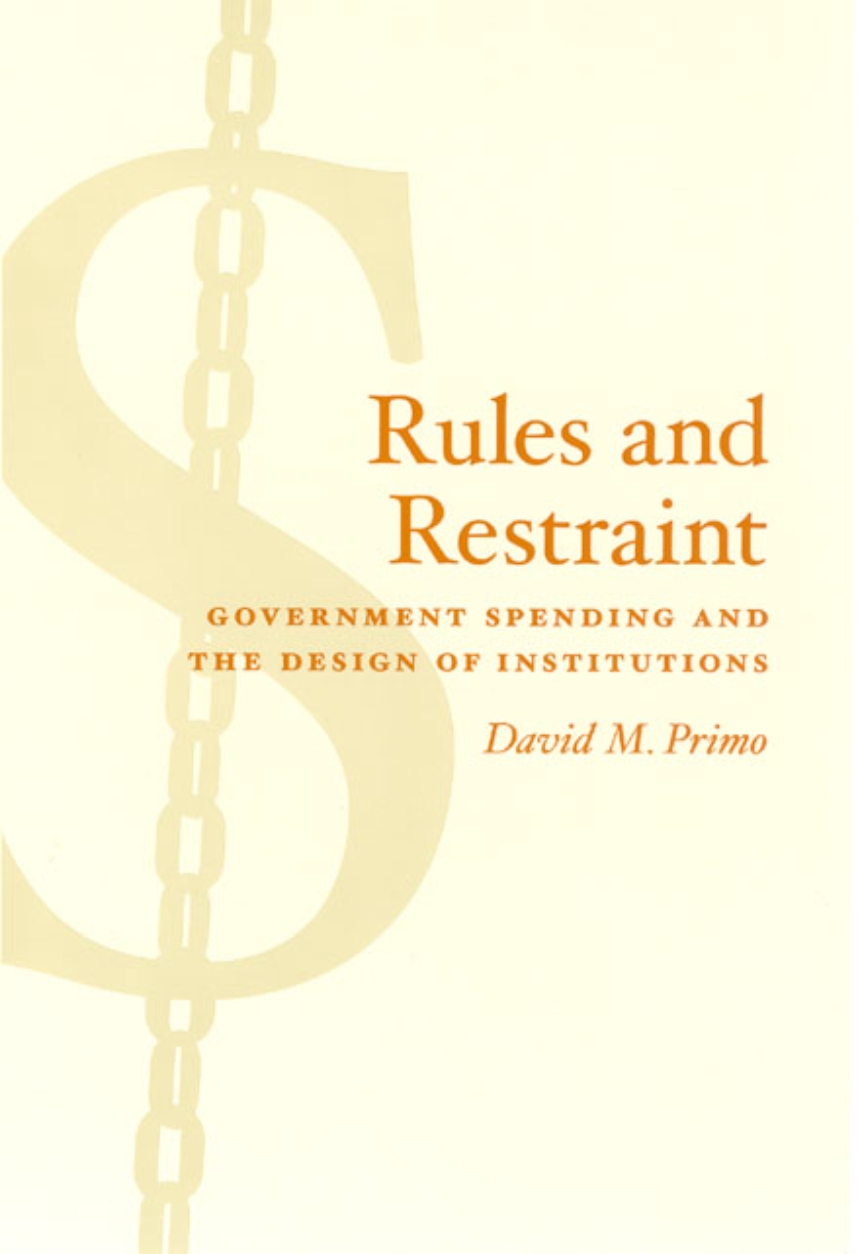Rules and Restraint
Government Spending and the Design of Institutions
9780226682600
9780226682594
9780226682617
Rules and Restraint
Government Spending and the Design of Institutions
Government spending has increased dramatically in the United States since World War II despite the many rules intended to rein in the insatiable appetite for tax revenue most politicians seem to share. Drawing on examples from the federal and state governments, Rules and Restraint explains in lucid, nontechnical prose why these budget rules tend to fail, and proposes original alternatives for imposing much-needed fiscal discipline on our legislators.
One reason budget rules are ineffective, David Primo shows, is that politicians often create and preserve loopholes to protect programs that benefit their constituents. Another reason is that legislators must enforce their own provisions, an arrangement that is seriously compromised by their unwillingness to abide by rules that demand short-term sacrifices for the sake of long-term gain. Convinced that budget rules enacted through such a flawed legislative process are unlikely to work, Primo ultimately calls for a careful debate over the advantages and drawbacks of a constitutional convention initiated by the states—a radical step that would bypass Congress to create a path toward change. Rules and Restraint will be required reading for anyone interested in institutional design, legislatures, and policymaking.
One reason budget rules are ineffective, David Primo shows, is that politicians often create and preserve loopholes to protect programs that benefit their constituents. Another reason is that legislators must enforce their own provisions, an arrangement that is seriously compromised by their unwillingness to abide by rules that demand short-term sacrifices for the sake of long-term gain. Convinced that budget rules enacted through such a flawed legislative process are unlikely to work, Primo ultimately calls for a careful debate over the advantages and drawbacks of a constitutional convention initiated by the states—a radical step that would bypass Congress to create a path toward change. Rules and Restraint will be required reading for anyone interested in institutional design, legislatures, and policymaking.
216 pages | 16 line drawings, 6 tables | 6 x 9 | © 2007
American Politics and Political Economy Series
Economics and Business: Economics--Government Finance
Political Science: American Government and Politics
Reviews
Table of Contents
List of Illustrations
Acknowledgments
1 Introduction
2 Rule Design and Enforcement
3 External Enforcement
4 Internal Enforcement
5 The U.S. States
6 The Federal Government
7 Conclusion
Appendix A Technical Material for Chapter 3
Appendix B Technical Material for Chapter 4
Appendix C Technical Material for Chapter 5
Appendix D Technical Material for Chapter 6
Notes
References
Index
Acknowledgments
1 Introduction
2 Rule Design and Enforcement
3 External Enforcement
4 Internal Enforcement
5 The U.S. States
6 The Federal Government
7 Conclusion
Appendix A Technical Material for Chapter 3
Appendix B Technical Material for Chapter 4
Appendix C Technical Material for Chapter 5
Appendix D Technical Material for Chapter 6
Notes
References
Index
